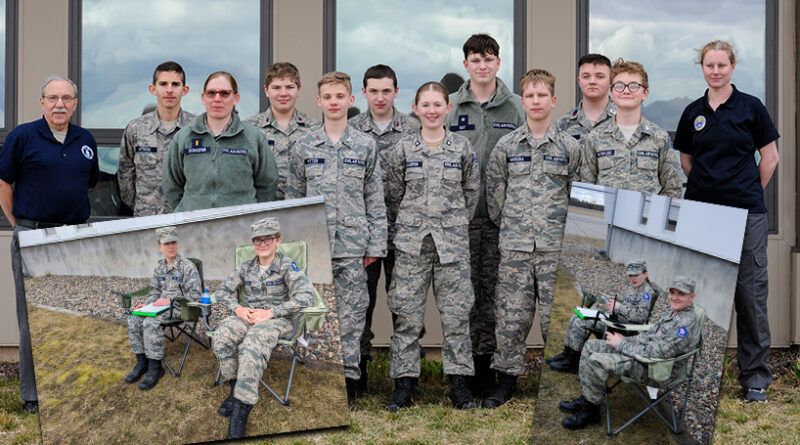Youngsters in local Civil Air Patrol partner with NASA during recent eclipse
By Patrick Lynn
Data collected during the April 8 solar eclipse by the Stevens Point Composite Squadron of the Civil Air Patrol has been sent to assist NASA.
The information will assist in refining weather models, enhancing forecasting, and designing radio communication systems resilient to solar storms.
The squadron, comprised of 12 members, including nine cadets aged 12 to 18, participated in the Civil Air Patrol’s Solar Eclipse Mission in partnership with NASA. Their efforts were part of a nationwide initiative involving over 40,000 CAP members and classroom students.
During the six-and-a-half-hour eclipse, the squadron monitored various weather parameters such as air temperature, cloud cover/type, wind speed/direction, and precipitation. They also tracked the impact of solar eclipses on VHF radio operations.
The data collected by the Stevens Point Composite Squadron adds to the scientific data gathered at over 630 CAP data collection sites across seven time zones, 50 states, and two U.S. territories.
The information will contribute to advancing humanity’s understanding of the sun, the ionosphere, and Earth’s atmosphere, the group said.
Cadet Staff Sergeant Micah Ritter, 13, remarked on the experience, saying, “It was a very successful day of data collecting for NASA. It was a cool opportunity and I was happy to be part of it.”
Ritter, the unit’s Cadet STEM Education NCO (non-commissioned officer), hopes his participation will inspire his peers to pursue careers in STEM fields.
Cadet 2nd Lieutenant Lily Schaefer, 14, the squadron’s Cadet Emergency Services Officer, believes that their involvement in emergency services missions will expand the unit’s ground team.
“This mission took what we have learned in the classrooms and put it into our hands, and we got to work with NASA and help with a bigger mission,” she said.
Despite encountering relatively cloudy conditions, the squadron enjoyed the eclipse, with the clouds parting just in time for them to witness 81.9 percent coverage. Cadet Staff Sergeant Alex Albright, 14, expressed excitement about contributing to NASA’s research, saying, “It was fun collecting and researching data for NASA that will be used for years.”
The squadron’s next mission involves providing precautionary ground support for incoming aircraft to EAA’s Airventure in July.
About Civil Air Patrol
Founded in 1941 and established as the official civilian auxiliary of the U.S. Air Force seven years later, Civil Air Patrol is chartered by Congress as a nonprofit organization for the purposes of youth development, aerospace education, and promoting general aviation. In an auxiliary role as a Total Force partner of the Air Force, CAP operates the world’s largest fleet of single-engine aircraft for search and rescue, disaster relief, training, and education. Civil Air Patrol is dedicated to serving America’s communities, saving lives, and shaping futures. Visit GoCivilAirPatrol.com for more information, or email Schaefer at [email protected].



